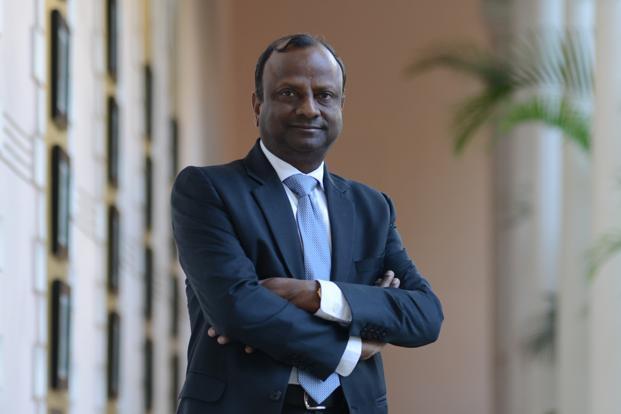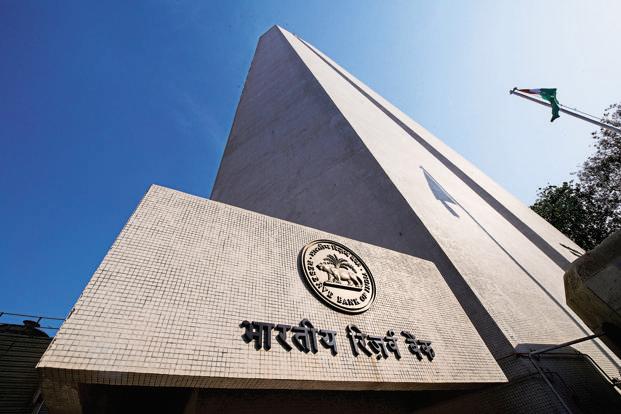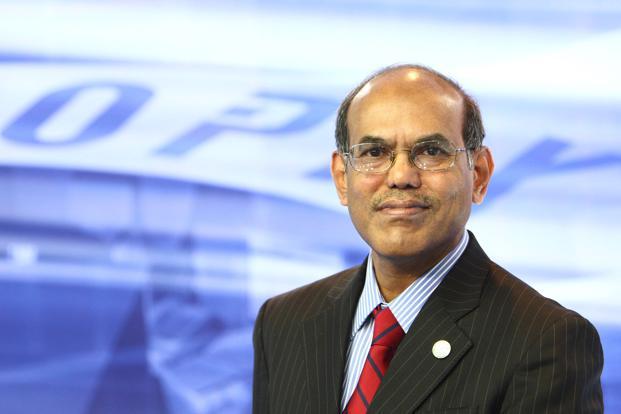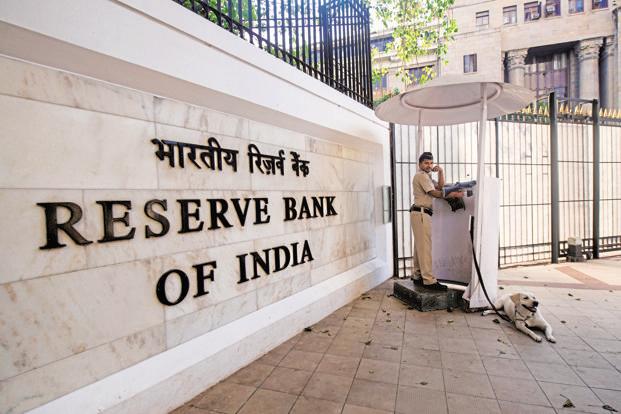Rajnish Kumar, 59, is the fourth chairman of the State Bank of India (SBI), the nation’s largest lender, all of whom I have dined with for Lounge interviews in the past decade. Barring one, the others (including Kumar) have preferred to meet at the Belvedere Club at The Oberoi hotel at Nariman Point, Mumbai, simply because it is a few minutes’ drive from the bank’s headquarters on Madame Cama Road.
Kumar walks in at 8.15pm, after a long day, and we decide to have a small single malt to unwind—Glenfiddich for him and Laphroaig for me, on ice (later, I realized he ordered the drink only to give me company; he himself hardly had a sip or two).
I greet him, saying he seems to be a lucky chairman. Since he took over on 7 October, the government has announced a big-bang Rs2.11 trillion recapitalization plan for public sector banks, global rating company Moody’s Investors Service has raised India’s sovereign rating by a notch and changed the outlook from positive to stable (the latter happened on the day we met, 16 November), and the SBI stock has risen some 35%. He responds with a smile.
The son of an irrigation department employee in Uttar Pradesh and a postgraduate in physics from Meerut University, Kumar never gets too excited. This has something to do with his upbringing. The youngest of four siblings, he led a disciplined life. In his college days, on the rare occasions he returned home after 10pm, he would see his parents waiting outside anxiously.
He could not qualify for the Indian Administrative Service, though he did clear the preliminary exam twice, and when he got a PO (probationary officer) job at the SBI, there was a lot of excitement in the family. Carrying a large suitcase and a holdall, he got into the first-class compartment—for the first time in his life—on a train from Meerut to Etawah. After a five-and-a-half-hour journey, he reached Etawah at 3am, spent the rest of the night in the railway station’s ramshackle waiting room and took a bus to Auraiya tehsil, his first posting, in the morning.
Anybody could wave a hand and stop the bus, which took more than 3 hours to traverse the 50km distance. He joined work on 19 November 1980—his colleagues were welcoming but a “homesick” Kumar went back on the weekend to see his family, much to their surprise.
Kumar enjoyed his “clerical” job at the counter but he remembers his first assignment more for something else—the killing of 20 upper-caste Thakurs by Phoolan Devi at Behmai village, around 20km from the branch, in February 1981.
Interesting assignments in the early part of his career included Mauranipur, western Uttar Pradesh (where it was difficult for a bachelor to get a house on rent and a husband could not watch a movie in a theatre with his wife), Naini in Allahabad, and terrorist-infested Pilibhit.
As a field officer at Naini, he got a taste of the local mafia and auctioned a factory to recover a bad loan. In Pilibhit, he had to negotiate with hard-core trade unionists for 15 months. These postings helped him hone his leadership skills.
Later, a stint each in Toronto and London and postings at the corporate accounts group, mid-corporates, the North-East and the bank’s investment banking arm, SBI Capital Markets Ltd, gave him all-round experience. Barring treasury, he had first-hand experience of virtually every department of the bank before he moved to the headquarters as a managing director (MD), national banking, in May 2015.
Kumar prefers to sleep and rise early and goes for a morning walk every day. He loves reading books, particularly those on mythology, and playing with his two-and-a-half- year-old grandson, Rihansh, whenever he gets the chance. When Rihansh is not around (his daughter’s family lives in Kolkata), Kumar keeps in touch through WhatsApp video calls. He watches Hindi films (‘Bareilly Ki Barfi’ is the last film he has seen) and prefers to spend time with wife Reeta rather than socializing with bankers. Kumar also loves to travel and makes it a point to go to Haridwar and Rishikesh once a year.–
Did he ever think he would make it to the corner room? I ask as we discuss what we should order for dinner. “When I became a deputy managing director, my boss told me I had a 5% chance of making it to the top. But when I was called for the interview for selection of the chairman, my chance was 25%, as all four MDs were called,” he says, adding, “At home, I eat north Indian food every day; let’s go for Continental or Chinese. Pasta chalega.”
Of the four MDs, he is the seniormost age-wise (he would have retired in January), but B. Sriram became an MD before him and hence is senior to Kumar. “Our relationships are strong. It really doesn’t matter who is the chairman,” Kumar says. We decide to order Chinese food from The Oberoi’s pan-Asian restaurant India Jones —mixed noodles and fried rice, a chicken dish, stir-fried vegetables and fish.
There had been speculation of his appointment as SBI chairman, though the government notified it only on 6 October. That afternoon, TV channels flashed the news but he could not inform his wife till 8pm because the congratulatory calls carried on non-stop. Kumar carries only one mobile phone.
I ask him how “close” he is to corporate houses; some of his colleagues say he has “thick” relations with many of them. “Yes, many Indian companies know me well and I am accessible. If you are handling corporate credit for years, aren’t you supposed to know them? Is maintaining a good relation with companies bad? It helps me resolve the issues, if any, faster. As long as my relations with corporations do not influence my decisions and I don’t compromise on the interest of the bank, where is the problem?” he asks.
I ask him to outline his agenda for the bank. Kumar picks three challenges, in this order: resolution of bad loans, making the bank technology-savvy to remain ahead of the curve and cut costs, and building skills among his colleagues.

“We need to manage the credit risks well. Unless we bring down the credit cost and provisions for bad loans, how do we make handsome profits?” he asks. To build skills, he will focus on training. Upping the bank’s operating profit is a key component of his action plan, for he cannot otherwise set aside enough money for bad loans. “I want to raise the provision coverage ratio to build strength for absorbing losses. Going forward, slippages (creation of bad loans) must also come down,” he says.
The SBI has a Rs35 trillion balance sheet, of which Rs19 trillion are loan assets. “I need to make more than Rs30,000 crore annual profit to get around 0.9% RoA (return on assets). If I need to provide Rs25,000-30,000 crore annually, then I must make that much operating profit.” (To illustrate how easy or difficult the task is, here are the figures for the first half of the fiscal year 2018: The SBI made an operating profit of Rs31,813.20 crore and, after making a provision of Rs28,060.51 crore, a net profit of Rs3,587.08 crore).
Kumar is optimistic that his bank will be able to resolve the bad loan issues soon. “Haircuts (forgoing a part of the interest and principal of loan amount) are inevitable but I must say, the approach of the companies is changing. Earlier, when they were not able to pay back a loan, they used to say ‘your’ (the bank’s) loan would turn bad. Now, when a loan is turning bad, they are afraid of losing ‘their’ business. This realization was not there,” he says. This is a result of the Insolvency and Bankruptcy Code, 2016, which empowers banks to take on the defaulters.
At the organizational level, Kumar is determined to reduce the turnaround time of decision making. But he is against expanding business just for the sake of growth. “I will not be cowed down by the pricing pressure. I would not care whether competition is taking away my loan accounts by offering a finer price. I believe that for every business, we must assess the risks and returns; I don’t believe in undercutting competition just to grow,” he lays his business philosophy on the dining table.
This is why he does not see more than 6% credit growth in the current fiscal year, even though nobody is happy with the banking system’s tardy credit growth. He is reorganizing the way the world’s 45th largest bank (by assets) does business and taking a close look at the credit risk management structure (already, one MD has been assigned the task of overseeing stressed assets).
I ask him about the bank’s not-so-good customer service. He accepts that it is imperative to improve service but highlights the logistical challenge—one out of every three Indians is an SBI customer. It has 23,000 branches, managed by 2.68 million employees and 60,000 ATMs.
We skip dessert and I ask him the last question: What is his biggest strength? “My biggest strength is decision making. I don’t sit on papers. There is no grey area when it comes to decision making. It’s either black or white. I must say Yes or No. One wrong decision is better than indecision any day, as the cost of indecision is too much.”
As chairman, he has a three-year tenure. Will he be able to achieve what he wants to in that time? “If I can’t in three years, I wouldn’t be able to do in three decades,” he says bluntly. It’s 10.45pm. Stumped by his bluntness, I remind him of his morning walk and we call it a day.



